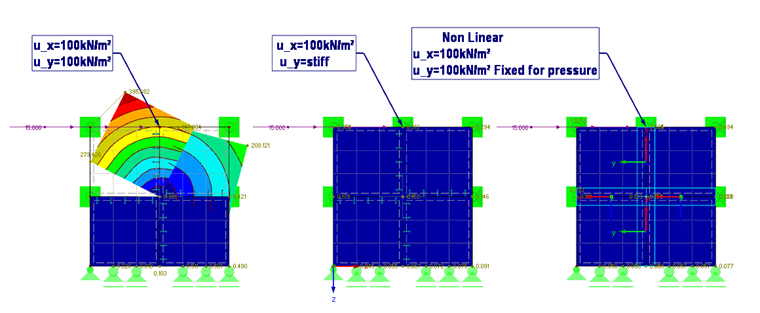The differences can be explained using an example (see the image) that compares the results of a nonlinear calculation with the results of a linear calculation. You can find the model file under Downloads below.
The left-hand and middle models have linear line hinges. In the left-hand model, compliance is defined in ux and uy, and in the middle model, only in the direction ux. In the right-hand model, compliance is defined in ux and uy, but a pressure contact between the surfaces is still specified. These surfaces, therefore, cannot intersect under pressure.
When checking the results, it is obvious that the left-hand model is too weak: the surfaces intersect due to the compliance in uy. The middle and right-hand models, by contrast, provide identical results.
It is often advisable to keep to a linear calculation, if possible. Therefore, the middle model is most favorable for the numerical analysis, although the right-hand (nonlinear) model is closer to the reality. However, the example is only a small comparison model. In reality, you would probably not apply the spring in uy/uz, but instead assign the force to a tie rod. This is another reason that the middle model without uy is recommended.
The consideration of end releases between surfaces is also described in a technical article of our Knowledge Base, which you can find under Links below.
